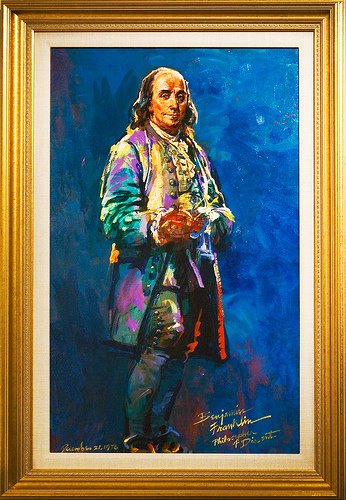
I have recently become completely fascinated with California history spanning from 1900 to the 1930's; Los Angeles history in particular. Many of us have heard the name Mulholland whether is was the title of a movie or a famous winding highway. However, I recently learned some history behind the name; it belongs to one William Mulholland, an Irish immigrant who never finished grade school but who's name would soon be forever synonymous with the county he helped to build. When he arrived in California in 1877, he worked digging ditches for the outdated turning wheel irrigation system that was being used at the time. While he worked he began to devise new ideas regarding how to bring more water to Los Angeles & more efficiently. L.A. was a city that should have never been in a way; it was a desert with no natural resources to speak of, including water.
A friend of his named Frederick Eaton, who used to be the mayor of a small farming town in the Owens Valley (present day Bishop, CA), regaled Mulholland with stories of his old town and the abundance of water it had to offer. Mulholland took the 2 week journey with Eaton out to the valley. They say the two of them littered the trail with Whiskey bottles all the way there. To Mulholland's enormous surprise, the Owens Valley did indeed have a huge surplus of water. Mulholland automatically began to make grand plans of how he was going to supply L.A. with this fantastic resource.
The Owens Valley is the deepest valley in the U.S., sitting beneath the Inyo & Sierra mountains. Native americans had irrigated the rich land for centuries until German, Irish, & Scottish settlers pushed them out. Once the Europeans took over the land, they each sectioned o
ff their own land & it all became private property, including pieces of the river. By the time Mulholland arrived at the Owens Valley in 1905, the valley was made up of prosperous farms, a thriving small town with businesses, a school, & places of worship.
For Mulholland to use the Owens River water, he would need to get the rights away from the farmers. In a very sneaky move, some of Mulholland's men went into the recorder's office pretending to be government agents & convinced the clerk to allow them to view deeds, reports on water streams, & property documents. Meanwhile, Eaton was quietly buying water rights from farmers under the guise that they were helping a small local irrigation project.

Once everything was in place, Mulholland began to build what would be called the Los Angeles Aqueduct. It was made of 223 miles of giant pipe that was big enough for a locomotive to fit through. After years of construction, the aqueduct was dedicated with an opening ceremony by Mulholland on November 5, 1913. With its construction came a boom in population for Los Angeles; mostly white people from the Midwest. Hollywood came to settle in the town, large gardens & palm trees were planted, & a there was a large building boom that lasted throughout the 1920's & 30's. The town now had all the water they needed to make it an oasis & it seemed that everyone wanted a piece. Mulholland was viewed as a hero figure; he had a highway & a school named after him & people eventually pleaded with him to run for mayor.
The diversion of the water from the Owens Valley had ended up supplying the barren San Fernando Valley, which would become some of the richest farm land in the state. The change in this area would eventually lead the San Fernando Valley to become a thriving region & suburbs we know today.

By 1920, the people of the Owens Valley were experiencing the opposite of these joys. Water as no longer flowing their way & they were in a drought. Farms started drying up & businesses began to close. By 1924, the Owens River had been completely diverted & Owens Lake was dried up. Framers became angry which led to a standoff at the aqueduct. Groups of people form the Owens Valley drove out the aqueduct & reversed the stream of water back their town. Mulholland sent police but the Owens Valley police held them back for several days. Finally Mulholland's men offered a very fair bargain to the Owens Valley people, and once reached, they all cheered & went home. However, as soon as they left the deal fell through.
This betrayal led to several of the Owens Valley residents to sabotage the pipeline; several destructive dynamite blasts severely damaged the large infrastructure. This activity continued until Mulholland sent guards out with machine guns to patrol the area. The explosions
stopped.

When you drive through the Owens Valley today, you would never know that it was once lush farm land. It is a complete desert; although still beautiful nestled under the mountains. I just found this story to be so interesting & I had never realized what a giant impact water had made in not only the growth & development of Los Angeles, but also the shady dealings that devastated a community in the process.
I have plans to visit the aqueduct that Mulholland built & drive through the Owens Valley to get some more perspective. In the meantime I will leave you with one of the shortest speeches ever written & what pretty much sums up his attitude towards the whole business; Mulholland's words at the grand opening of the L.A. Aqueduct:
"There it is. Take it." - William Mulholland



No comments:
Post a Comment